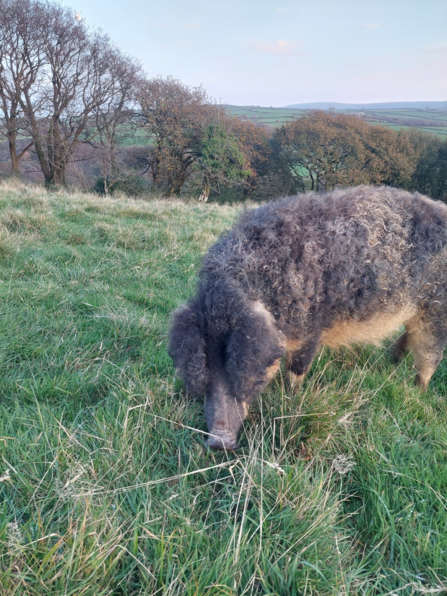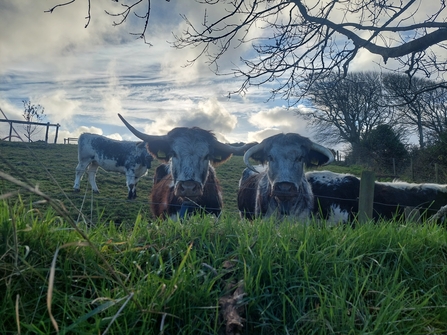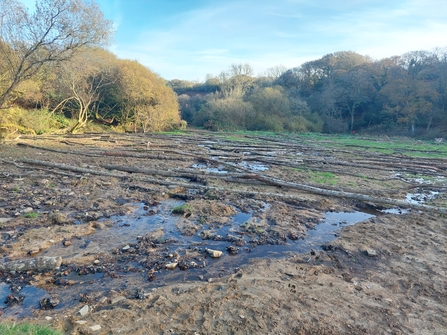Their important work is currently funded by Nature Returns and is a partner project of our Derwent Living Forest programme.
In the past the UK had more herbivorous mammals, such as bison and elk, browsing through our landscape. Their behaviours, such as breaking through vegetation with antlers and horns and creating uneven ground with their hooves, helped to shape varied woodlands and grasslands with high biodiversity. In Exmoor, we learnt how the National Trust are now utilising hardy ancient breeds including Longhorn cattle, Exmoor ponies and curly-haired Mangalitsa pigs as proxies, which mimic previous mammal behaviours, to help manage the landscape and create a mosaic of complex habitats.






